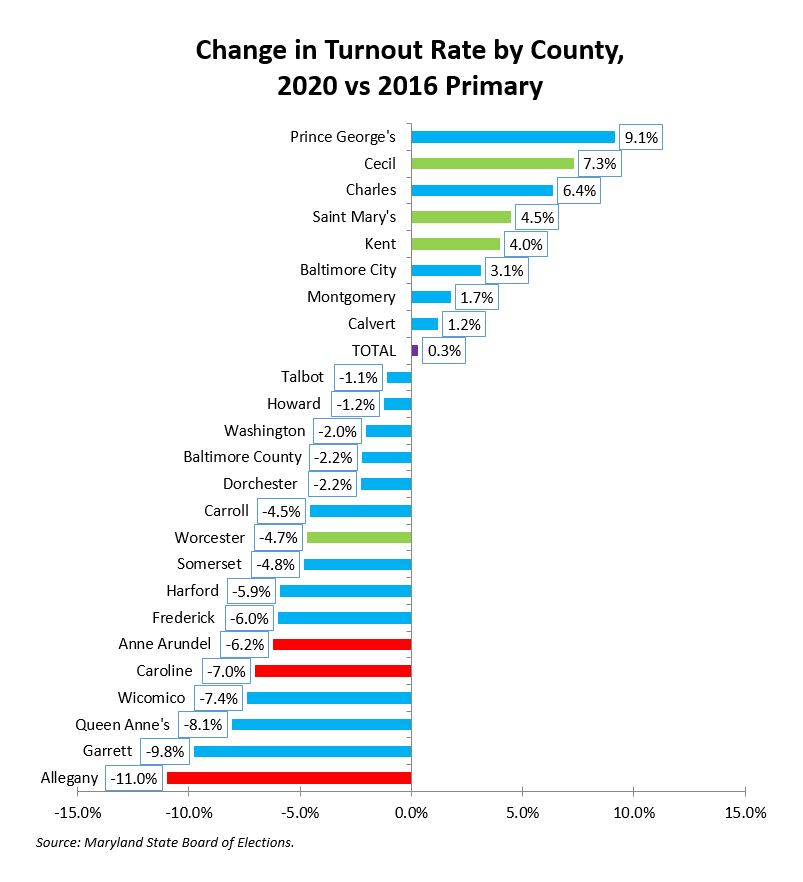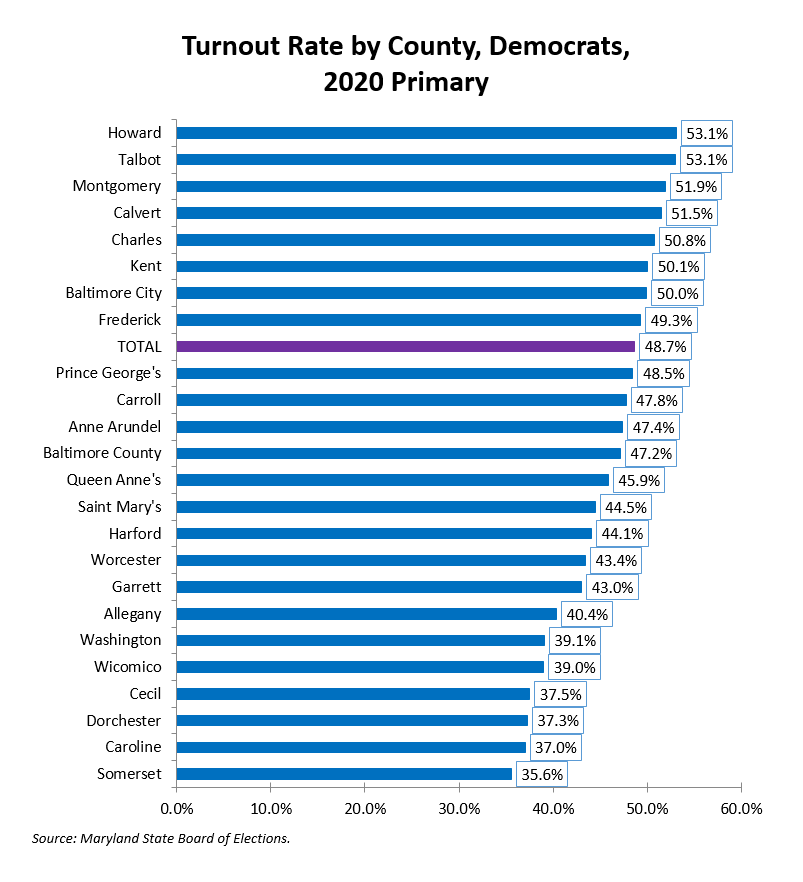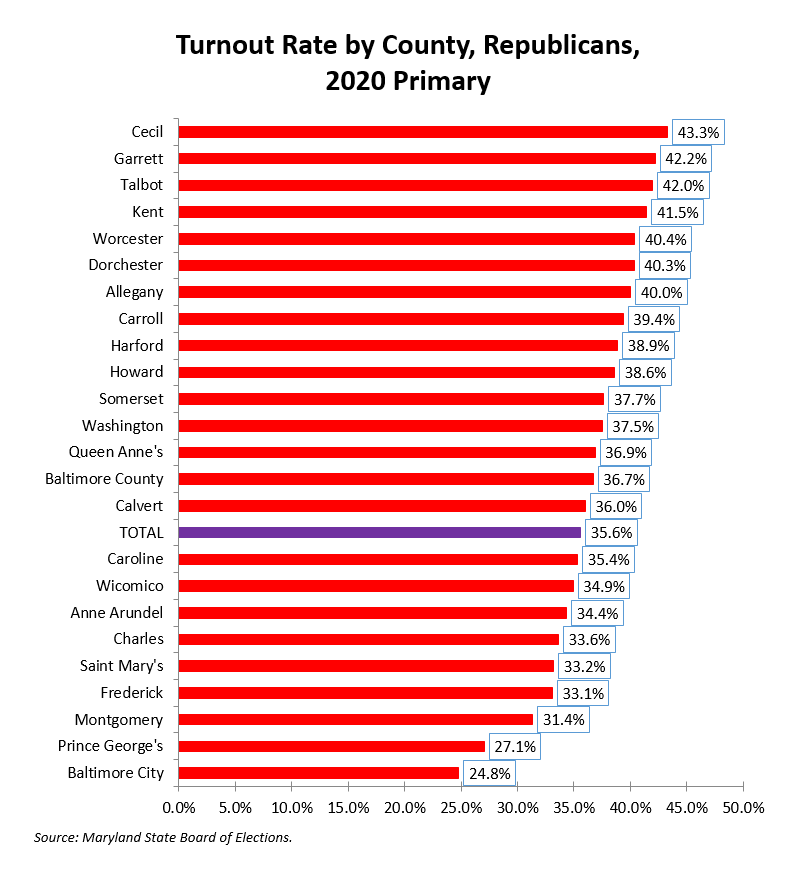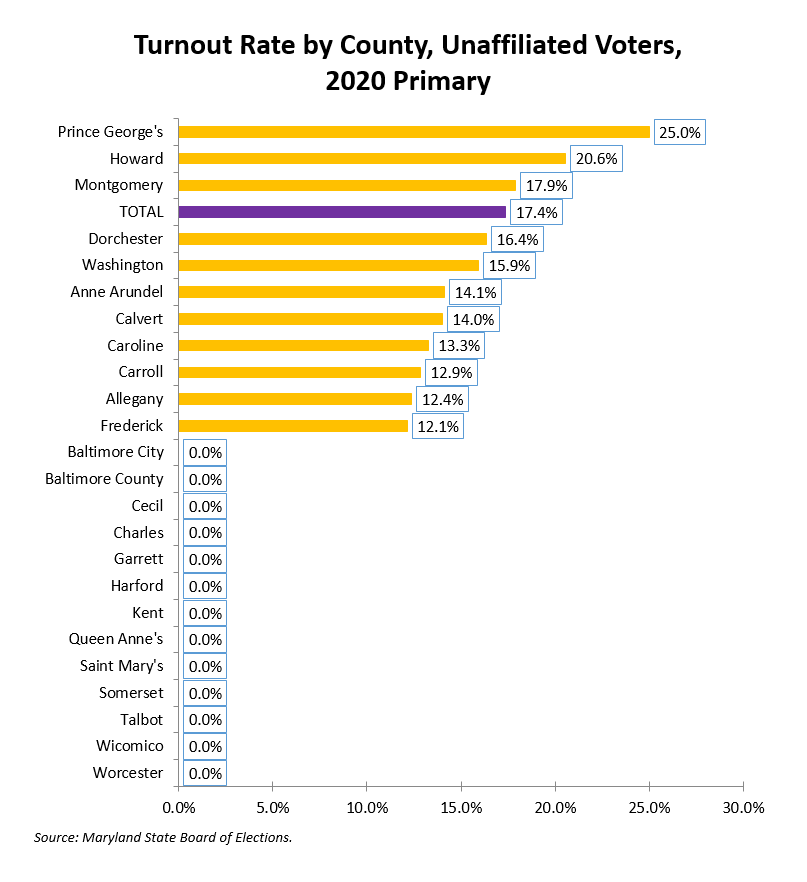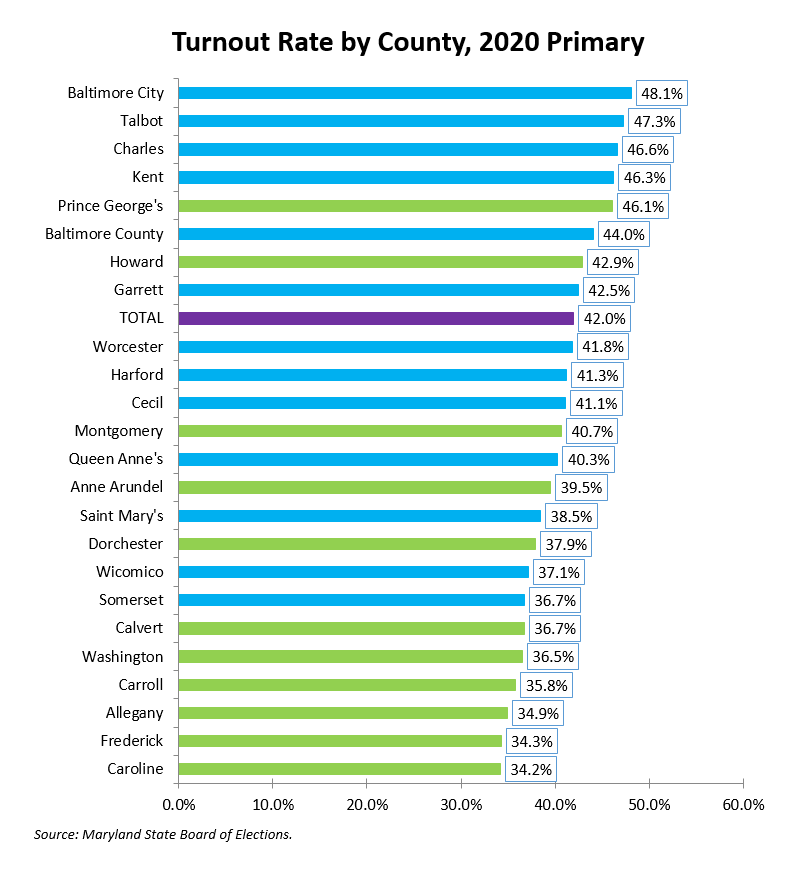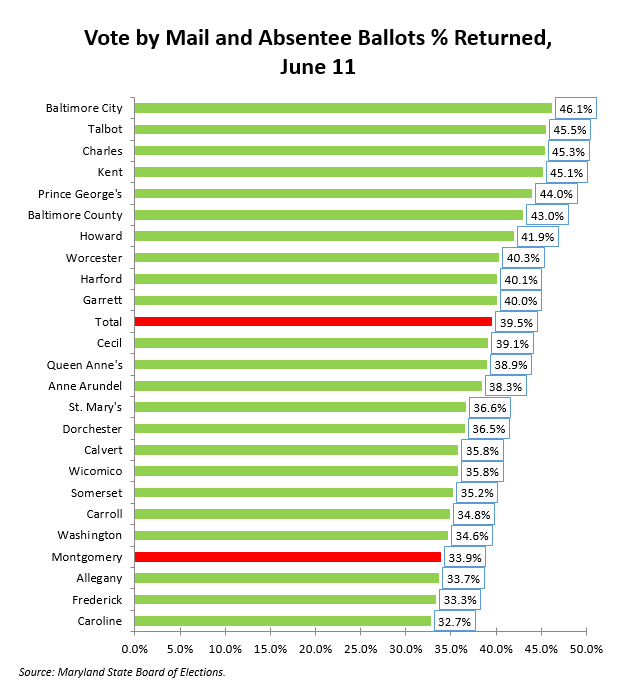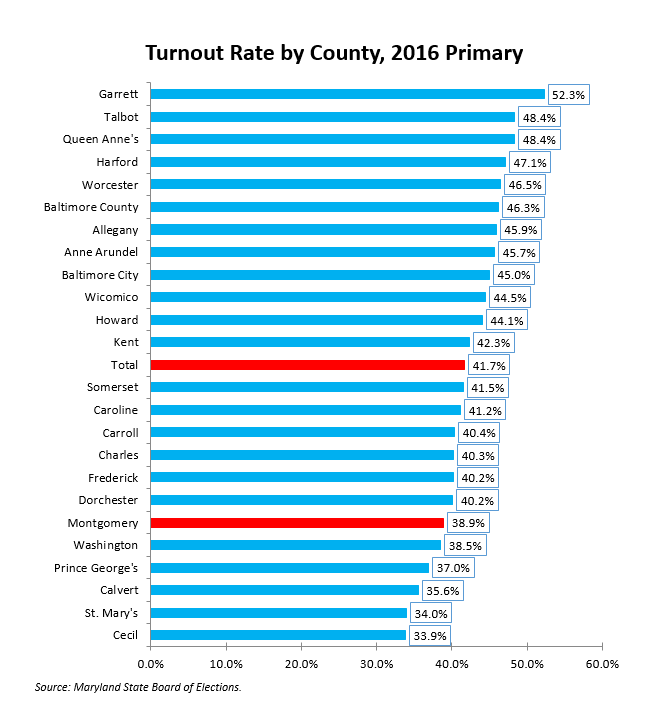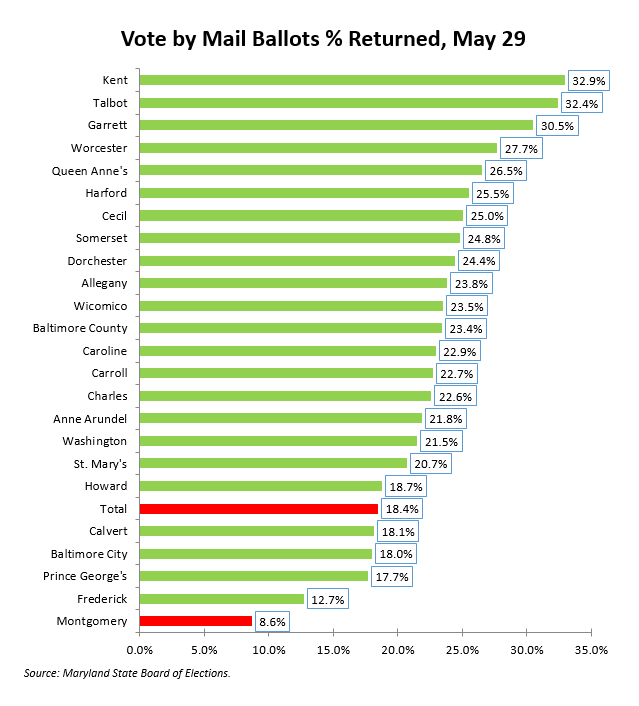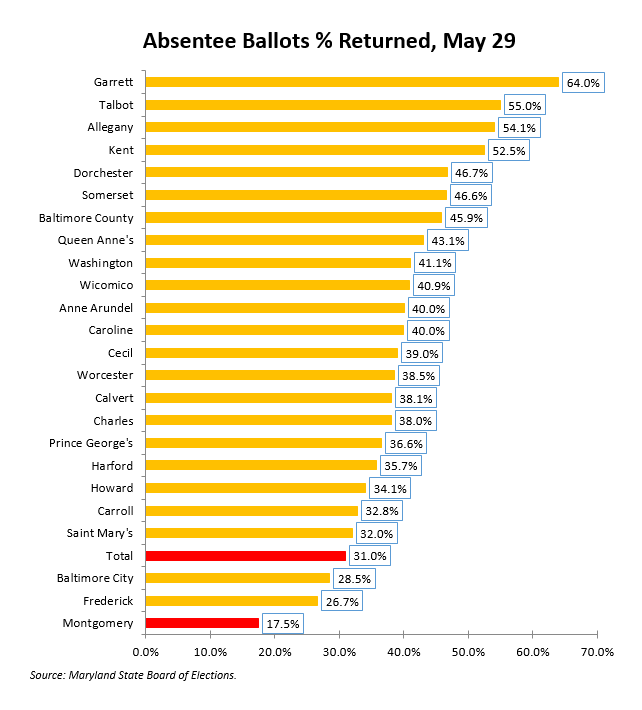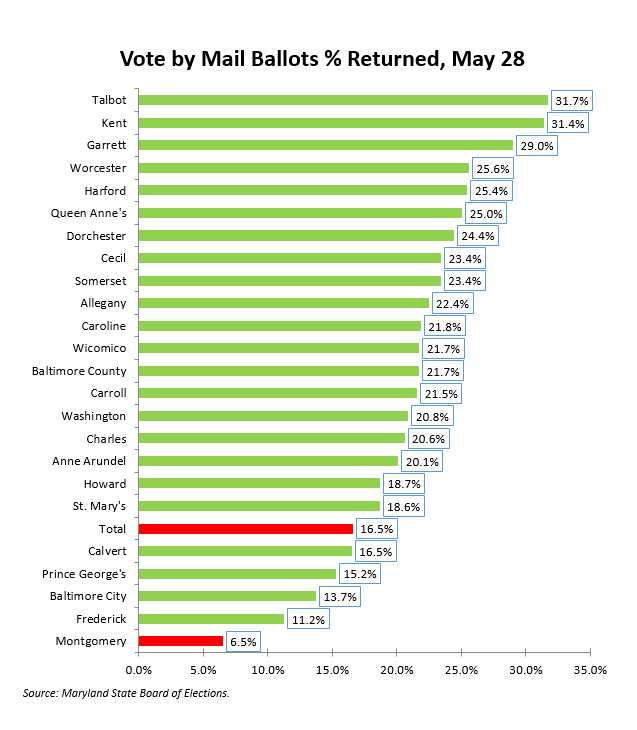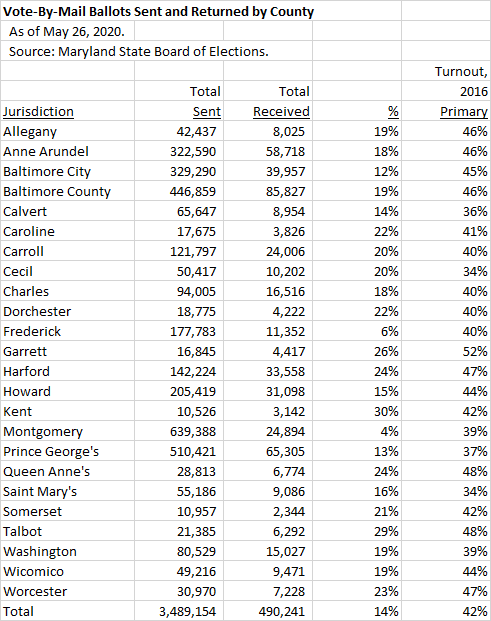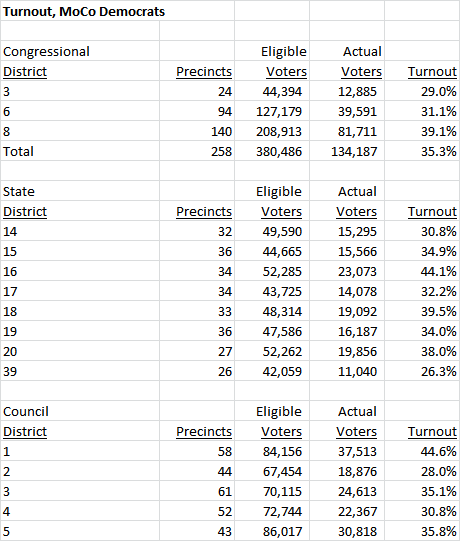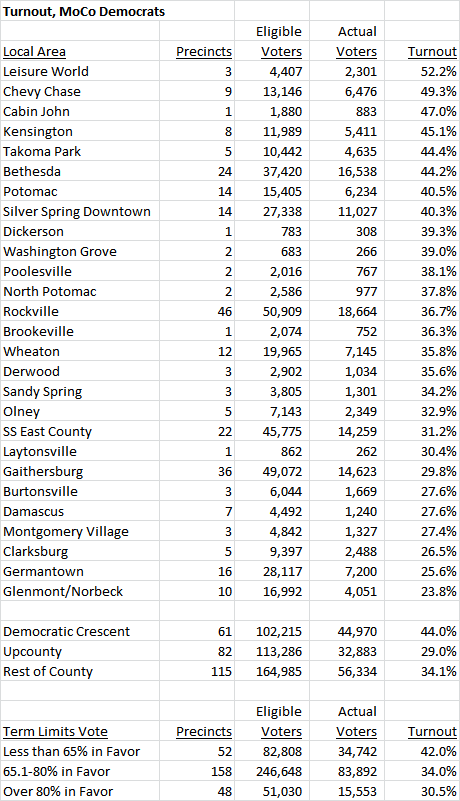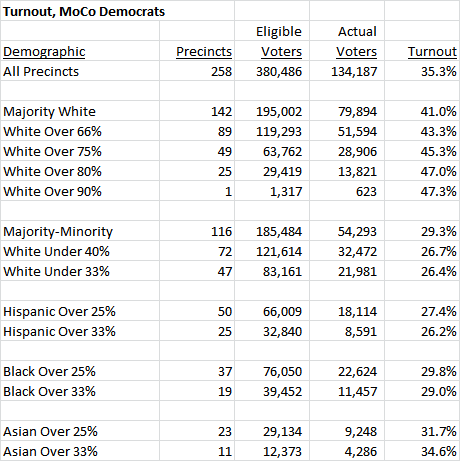By Adam Pagnucco.
Eighty percent of MoCo voters turned out in the 2020 general election, about average for a presidential year. In splicing the data, I did not find large variations in turnout rate by geography. The highest turnout was in Leisure World (85%) and the lowest was in Glenmont/Norbeck (73%). But there was significant variation in party turnout by area, demonstrating one of MoCo’s least appreciated characteristics: its political heterogeneity.
MoCo is thought of as a blue county, and at first glance, it is. All of the county’s partisan elected officials have been Democrats since 2006 and Democratic candidates for statewide office and president have won here for decades. But there are big political differences between parts of the county. For example, while Takoma Park is one of the most progressive areas in the United States, Republicans are competitive in Damascus.
The charts below show the percentage of MoCo voters who were Democrats, Republicans and unaffiliated or third party voters in the 2020 general election. The source of the data is the State Board of Elections. (See here for my methodology and definitions.) This information shows the differences in party participation by area.
Democrats
Democrats comprised 70% or more of the voters in the Democratic Crescent (the areas inside and near the Beltway), Downtown Silver Spring, Takoma Park and most of east county. Crescent voters play out-sized roles in Democratic primaries and were key to depressing Governor Larry Hogan’s MoCo vote percentage in 2018. Democrats were less dominant in upcounty and fell short of a majority of voters in Dickerson, Poolesville and Damascus.
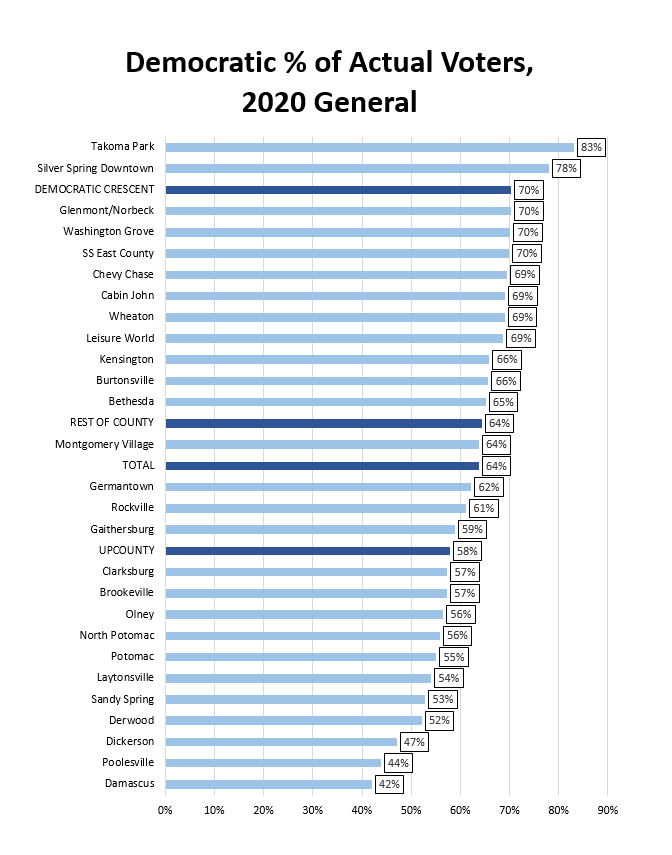
Republicans
Republicans were just 15% of actual voters countywide. But they accounted for a quarter or more of voters in some parts of upcounty and were a third or more in Dickerson, Poolesville and Damascus. While the GOP has some pockets of influence here, they are in long-term decline in MoCo as I will discuss in a future post.
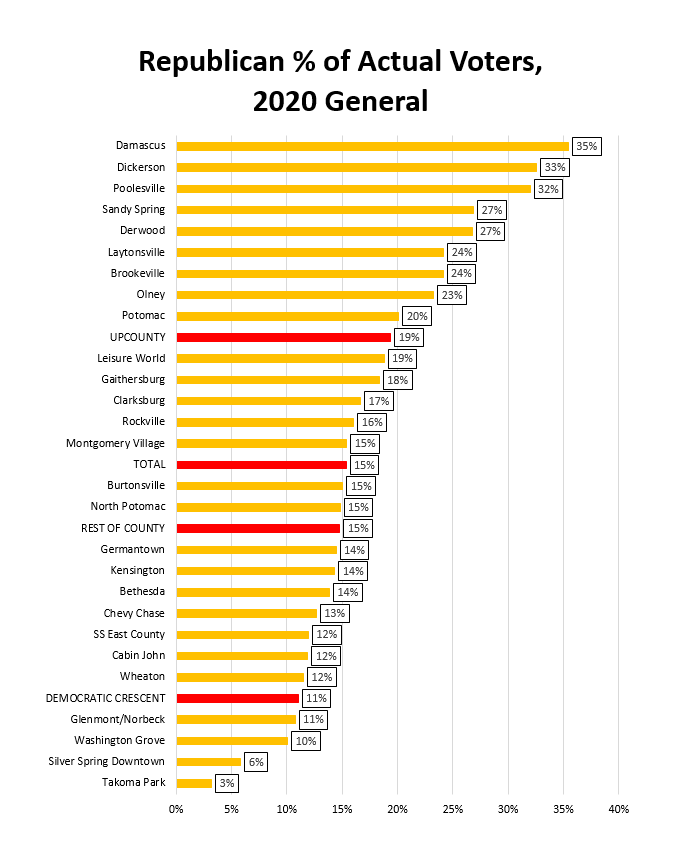
Unaffiliated/Third Party
Of the 156,702 eligible MoCo voters who were not Democrats or Republicans, 147,417 (94%) of them were unaffiliated. Unaffiliated and third party voters together accounted for 21% of actual voters, more than the Republicans. It’s probably not a coincidence that North Potomac, Clarksburg and Potomac had the highest percentages of these voters as those areas have concentrations of Asian residents. Many Asian voters don’t choose party affiliation and they tend to be politically diverse. It remains to be seen how the Trump presidency will affect their party choices in registration and voting over the long term.
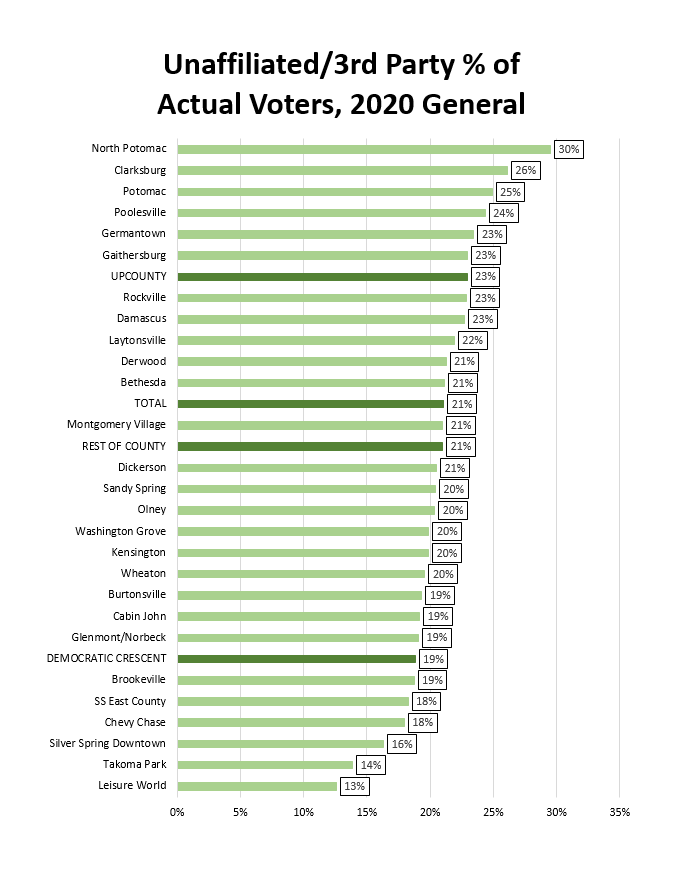
One effect Trump did have was to stimulate a surge in voting among MoCo Democrats, as we will explore in a future post. There was also a lot of partisan activity around the four county ballot questions last year which gave the Democratic Party a lot of influence over their chances of success. That may not always be the case in the future, and if it’s not, Republicans and unaffiliated voters can still play a role in coming general elections.

